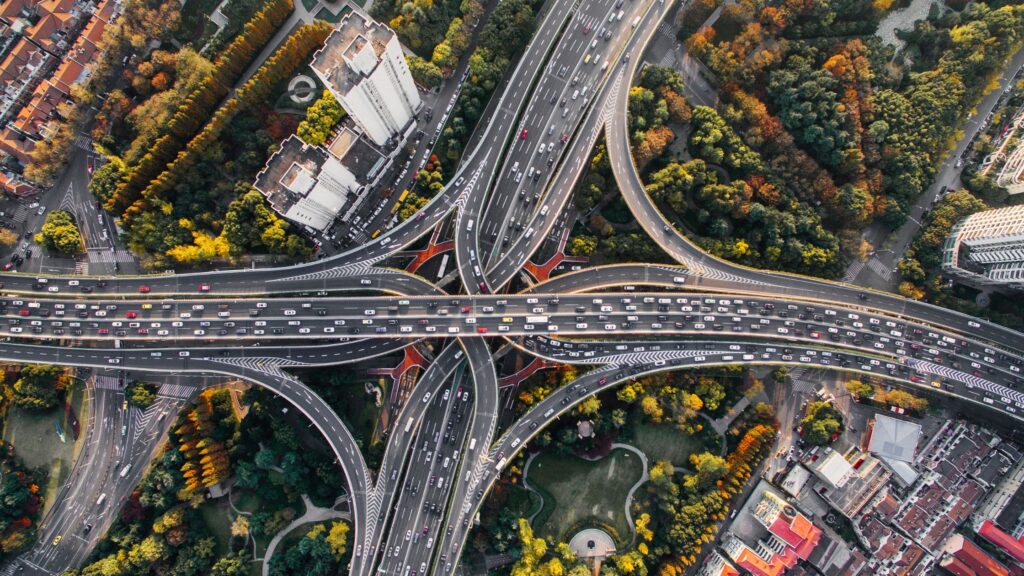India’s infrastructure landscape is undergoing a massive transformation. With growing urbanization, a booming population, and rising economic ambitions, infrastructure development has become a crucial pillar for India’s future. From roads to airports, these projects are designed to meet the ever-increasing demand for connectivity, sustainability, and urban expansion.
India’s infrastructure development is a mix of construction innovation, technological adoption, and strategic planning, setting the stage for growth over the next decade. Let’s explore some of the most significant projects that are driving India’s infrastructure revolution.
India’s Infrastructure Growth and Challenges
India is currently facing one of its biggest challenges — upgrading and expanding its infrastructure to meet the demands of a rapidly developing economy. As one of the fastest-growing nations in terms of urbanization and population, construction efforts are critical. Urban centers are expanding, and rural areas are receiving greater focus for infrastructure development, creating a balanced growth opportunity across the country.
However, construction projects often face hurdles such as land acquisition issues, funding constraints, and environmental concerns. These challenges present both difficulties and opportunities for developers, policymakers, and the private sector in shaping a sustainable infrastructure network for the country.
Key Projects Reshaping India’s Infrastructure
Several key projects are leading the charge in transforming India’s infrastructure:
National Infrastructure Pipeline (NIP)
The National Infrastructure Pipeline aims to boost India’s infrastructure development by allocating significant investments in key sectors, including energy, roads, railways, and urban infrastructure. With an estimated investment of $1.4 trillion, the NIP is set to transform the landscape over the next few years.
It is a group of social and economic infrastructures. The total sanctioned amount is 102 lakh crore rupees but according to Atanu Chakraborty, the secretary of Economic affairs Finance ministry 111 lakh crore rupees is needed. Total projects carried out under this initiative is around 6,835 projects.
5 major sectors are targeted through this initiative – road, railway, renewable energy, affordable homes and irrigation. According to Atanu Chakraborty’s report two major changes are needed. First, monetisation of infrastructure assets and Strengthening of Municipal Bonds Market. So people can also contribute to this project as well.
Bharatmala Pariyojana
Focused on improving road connectivity across India, this project aims to create a robust highway network that facilitates better trade, transportation, and logistics. The project will directly impact India’s connectivity, economic growth, and regional development. One of India’s most ambitious project just like NIP. Bharatmala Pariyojna implemented by Government of India which interconnects 550 district head quarters which is currently 330 through minimum 4 lane highway by raising the number of corridors to 50 currently 6.
This will move 80% of freight traffic to National Highways by interconnecting 24 logistic park, 66 Inter corridors and 116 feeder routes totaling 7500 km. This project also subsumes Highway projects like NHDP (National Highway Development Project) as well.
These projects are essential in strengthening India’s transportation, urban, and rural infrastructure, making them key drivers of economic development.
Aviation Sector (UDAN)
India’s aviation sector has experienced substantial growth. Number of civilian airports has been increased from 74 in 2018 to 148 in 2023. These airports are serving as a great tool for the connections between India and the world. International flights have also increased. Government of India allocated 4500 crores of budget to the aviation sector under Ude Desh ke Aam Nagrik (UDAN) scheme.
Impact of Key Infrastructure Projects on Economic Development
The successful execution of these major projects will have a profound impact on India’s economic trajectory. These developments will boost employment, create new business opportunities, and improve logistical efficiency across regions. Infrastructure improvements will also attract foreign investments and stimulate growth in sectors like manufacturing, services, and tourism.
For instance, the Ganga Expressway will enhance the movement of goods and people across Uttar Pradesh, reducing travel time, and promoting economic activities. Similarly, the Bharatmala Pariyojana will optimize road transportation, increasing efficiency and reducing costs for businesses and consumers alike.
Sustainability and Smart Infrastructure for Future Generations
As India pushes forward with large-scale construction projects, there is a strong emphasis on sustainability. Smart cities are an integral part of the vision for India’s future, combining infrastructure with technology to create eco-friendly, energy-efficient, and citizen-centric urban spaces. These cities will feature modern transportation systems, renewable energy integration, and sustainable waste management practices.
Projects like the National Infrastructure Pipeline aim to incorporate sustainable technologies that will ensure that India’s infrastructure is both future-proof and environmentally responsible.
Conclusion
India’s infrastructure revolution is well underway, with numerous projects setting the foundation for a brighter future. From highways to smart cities, these developments are reshaping the nation’s landscape, making it more connected, sustainable, and competitive on the global stage. As these projects unfold, they will create jobs, stimulate economic growth, and position India as a leader in infrastructure development globally.
In the coming years, India’s infrastructure sector will continue to evolve, driven by innovation, sustainability, and smart technology. These projects will not only redefine the country’s infrastructure but also create a robust framework for future generations.
For further inquiries about our services, partnership opportunities, or industry insights, feel free to reach out. Stay informed by subscribing to our magazine for exclusive updates, expert perspectives, and valuable content in the construction and infrastructure sectors.
